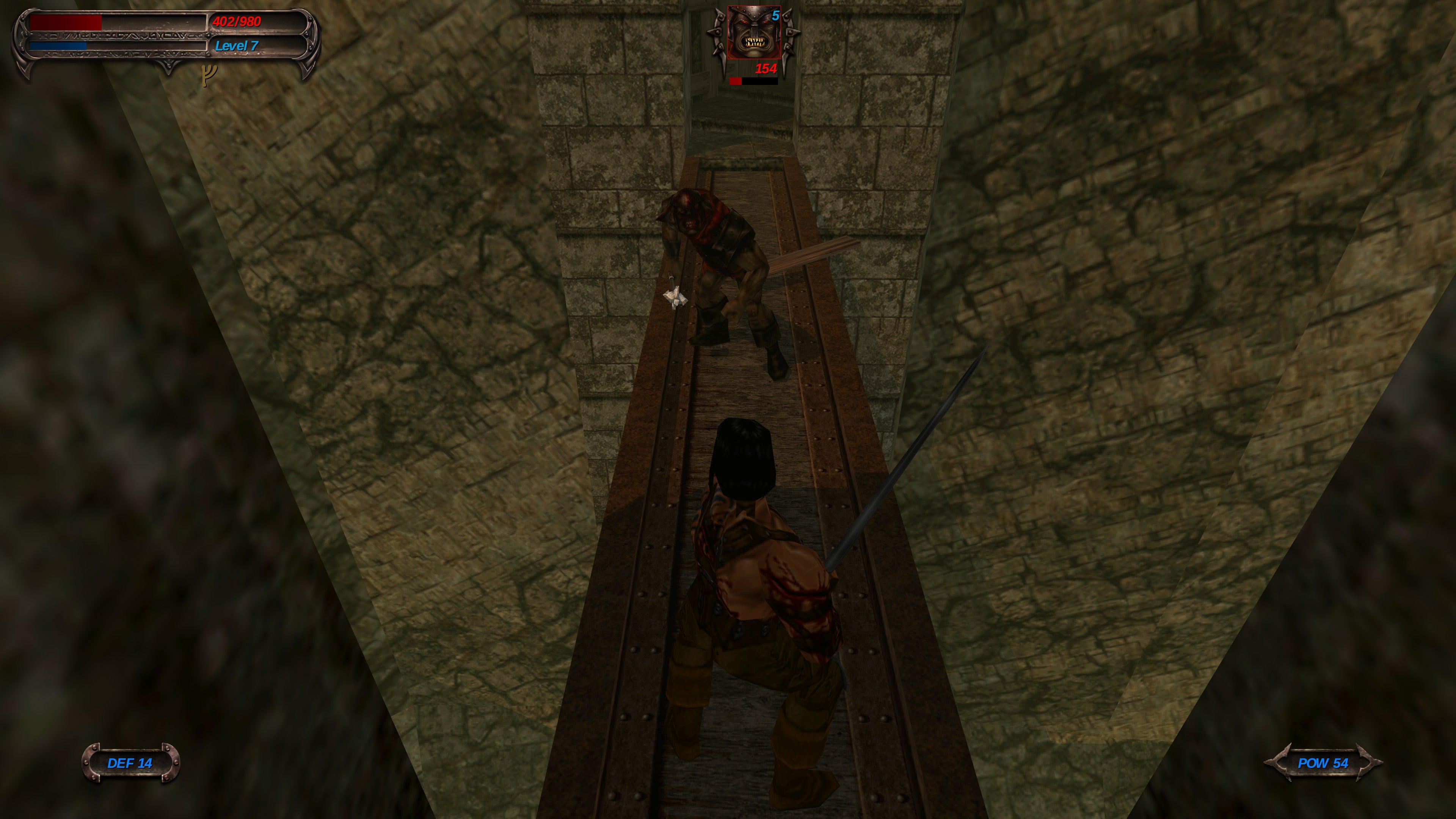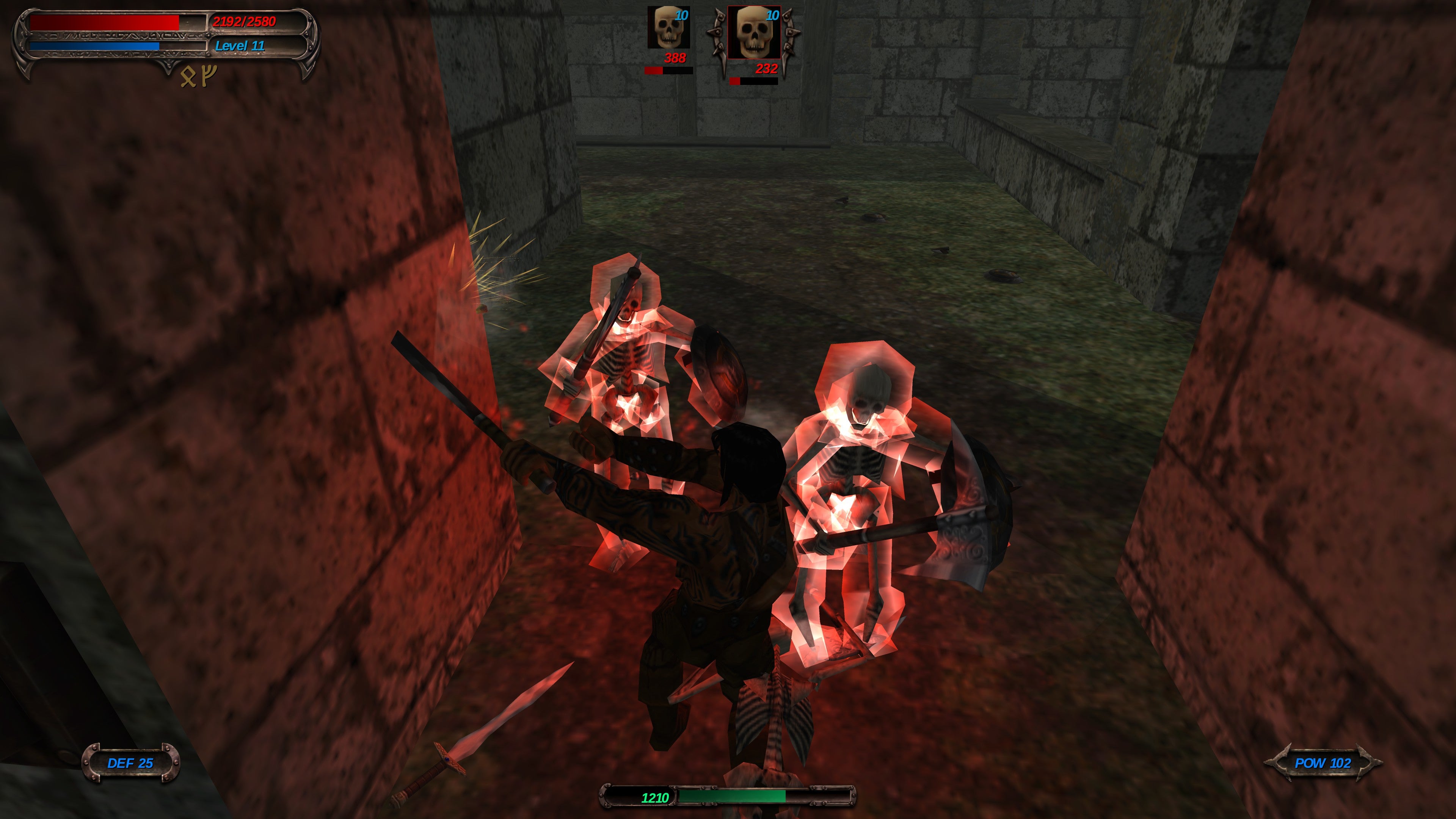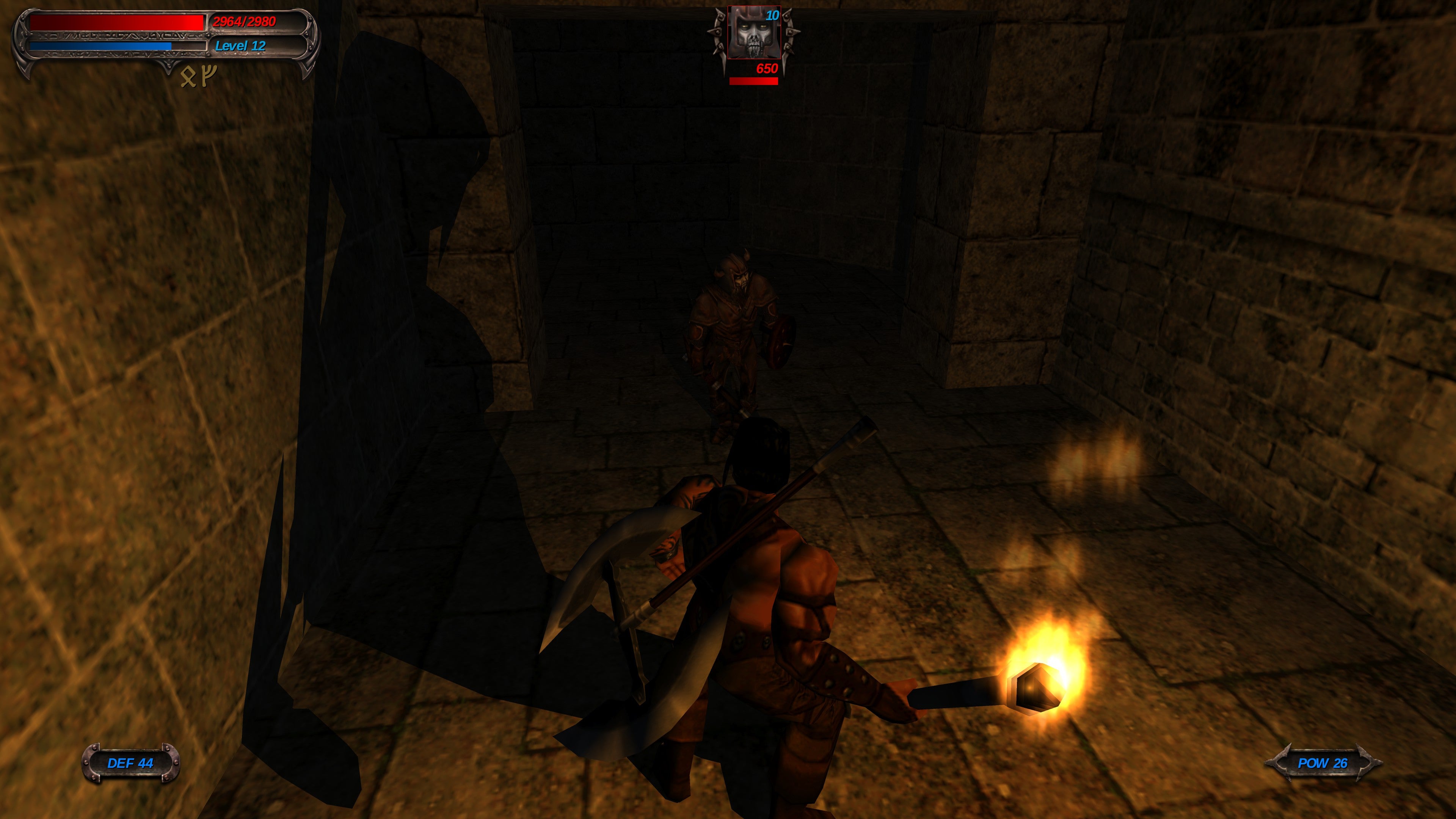Then again, Blade of Darkness is a game suited to myth. The action RPG developed by defunct Spanish developer Rebel Act Studios has spent much of its existence trapped in a realm of legal limbo. But it has recently been unleashed from its copyright dungeon by publisher SNEG, relaunching on Steam with a slightly abridged title and some much-needed support for modern screens and machines. What’s most fascinating about this re-release, however, is the game’s Steam description, which reads “Blade of Darkness is a hardcore fantasy action-adventure with unique combat mechanics and role-playing elements that pioneered the ‘soulsborne’ genre”. It’s a line fit for comedy double-takes. I thought Blade of Darkness was a game about chopping the legs off orcs, when did it suddenly become the progenitor of Dark Souls? The similarities become evident the moment you swing your weapon at an enemy. Or more to the point, the moment they swing theirs at you. Blade of Darkness’ combat is not merely violent, it’s also highly treacherous. Indeed, it was infamous for its stern challenge upon its original release. The game has no difficulty settings, most enemies can kill you in a few hits, and there are only a handful of opportunities to heal yourself on every level. Yet perhaps the biggest congruence between the two is their affinity for dodging. You can block enemy attacks, but both shields and weapons will shatter after a few blows. Consequently, the best way to avoid taking damage is with a canny sidestep, leaping away from enemy attacks, then using the opening to get in a hit or two. What’s particularly interesting is that being familiar with the rhythms of Dark Souls also makes playing Blade of Darkness easier. Knowing how to time dodges, when to close and when to keep my distance, meant I could run rings around enemies that caused me serious grief back in 2001. The similarities don’t end with combat. Blade of Darkness presents us with a fantasy world that is long past its prime, a sparse and dilapidated realm that’s all crumbling towers and ancient tombs, where civilisation and nobility have given way to brutality and chaos. An early example sees you explore the Fortress of Tel Halaf, a mountain fort that protects a trade route guarded by noble paladins. By the time you arrive, however, the guardians are all dead, the local Duke has been kidnapped, and the fortress is swarming with orcs and goblins. Blade of Darkness is generally reluctant to divulge much information to the player. Each level is introduced with a brief monologue that summarises the history of the location, with some additional paragraphs of exposition available in the game’s menu. But that’s it. Only a handful of characters speak to you through the entire game, and you won’t find any notes or other clues as to what’s going on in the world. As such, you only ever have a vague sense of what’s going on, and must resort to interpretation and imagination to fill in the gaps. Even the road to properly completing the game is oblique. To discover the game’s true ending, you must locate six runes hidden within the game world - doing so unlocks an extra level, a final confrontation in a place called “The Abyss”. It’s a remarkable array of coincidences. But it’s important to stress that they are coincidences. The thing about myths is they exist in the absence of facts, and anything can look like prophecy if you wait long enough. While the similarities between the two games are remarkable, there are many ways in which Dark Souls and Blade of Darkness are dissimilar. Blade of Darkness has no bonfire analogue, instead adopting a conventional save system, while its levels are linear and sequential, lacking the masterful intricacy of Lordran or Yharnam. There are also similarities which are less complimentary to both games, such as a rubbish jump and a fascination with awkward platforming in a game clearly not designed for it. Moreover, I dislike the notion that Blade of Darkness is some prototype for Dark Souls, because it frames the former as a curiosity, some historical quirk whose only quality is as a prophet for something greater. To truly understand why Blade of Darkness shares so many of Dark Souls’ qualities, you need to look at its own inspirations, particularly Conan the Barbarian. All the qualities that seem similar to Dark Souls, the brutal combat, the minimalist storytelling, the fallen fantasy world shrouded in mystery, are all inherited from the work of Robert E. Howard. Indeed, Blade of Darkness is probably the best Conan the Barbarian game never made. This is why I always play the game as Turkaram, for while there are four playable characters, the world Rebel Act designed is purpose built for a musclebound barbarian to pick the bones of. It doesn’t matter that you don’t fully comprehend the story behind each place visit, because you’re just passing through, hacking your way through the ruins of history on your own personal goal. Blade of Darkness doesn’t belong to the soulsborne genre, it’s a well made Conan simulator that happens to have landed on a lot of the same ideas. That said, the comparison has some merit, insofar as it drags Blade of Darkness out from the shadows of obscurity. Although there’s no causal link between the two, it is a game well-suited to souls fans, one which holds up surprisingly well twenty years on. Blade of Darkness may not have pioneered Dark Souls, but Dark Souls has paved the way for Blade of Darkness’ redemption.



